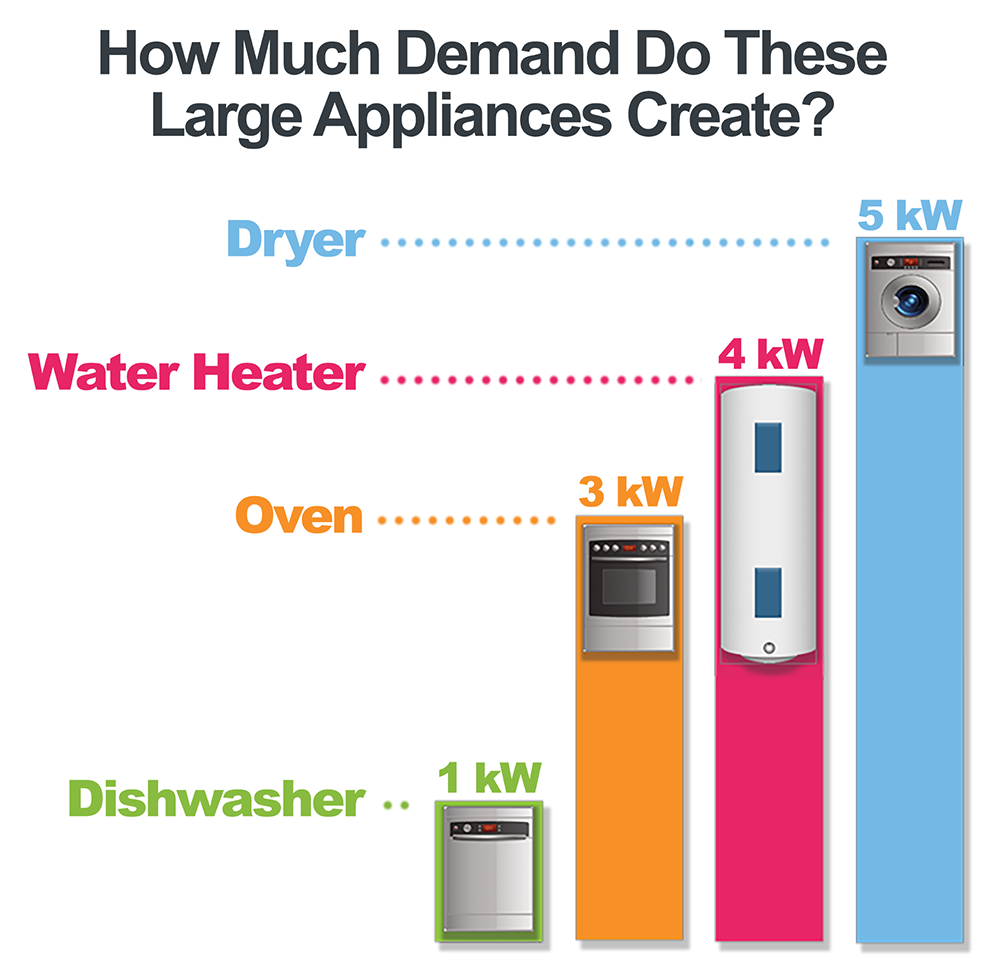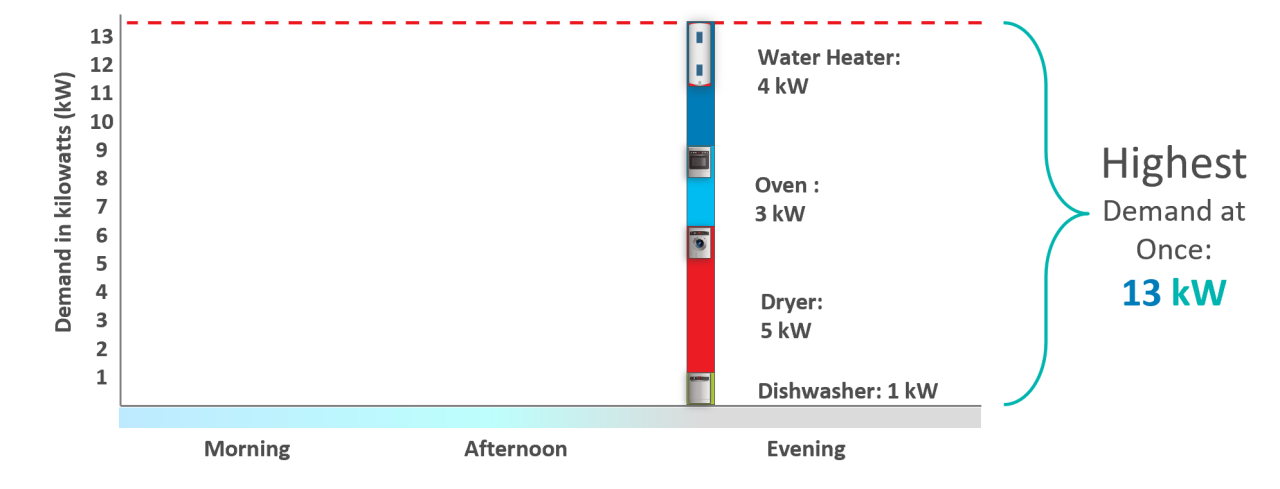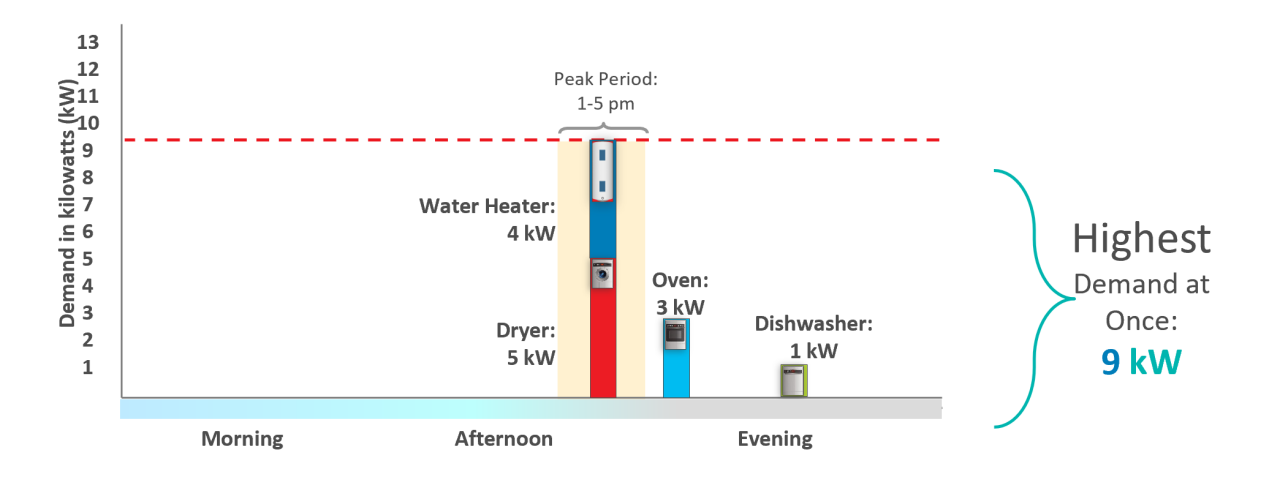Family Dwelling - Demand Rate Plan
The Family Dwelling – Demand Rate Plan (FD-D) is designed to help you lower your electric bill by reducing how much electricity you use at one time, especially during peak hours.
If you can stagger the use of major appliances – like not running the dishwasher, dryer and AC all at once – or shift appliance use outside of peak hours, this plan could help you save.
How It Works
Unlike the standard Family Dwelling plan (Rate FD), this plan includes a ratcheted demand charge – a charge based on your highest amount of electricity used at one time during peak hours.
This charge is "ratcheted," meaning it can stay on your bill for several months, even if your demand drops later.
The energy charge is a flat rate for all electricity (kWh) used each month – no matter what time of day.
Peak Hours for Demand
April–October:
Weekdays, 1-5 p.m.
November–March:
Weekdays, 6-9 a.m.
Family Dwelling - Demand FAQs
What is demand (kW) and how can customers change their behavior to impact their bill?
Demand is the amount of power, measured in kW, needed to operate every electrical device running in your home at a specific point in time. Examples of common appliances and typical demand or kW are listed below

In the example below, one might typically arrive home and begin to cook, run the dishwasher and dry some laundry while another family member uses hot water while showering. If the demand for the moment that all of that happened was displayed graphically, it might look something like this:

By staggering use of large appliances, you have control over how much you’re charged for demand each month. The picture below illustrates how changing when the appliances are used can impact the overall demand charge.

How is the billing capacity calculated for Rate FD-D?
In short, this rate utilizes a demand ratchet which is commonly used in the electric utility industry and means that your demand charge will be based on the highest of your current month’s demand or 90% of the highest demand over the last 11 months. Both of these demand measurements will be taken during the peak periods defined in the rate. Managing your demand during peak periods will give you an opportunity to impact your bill.
